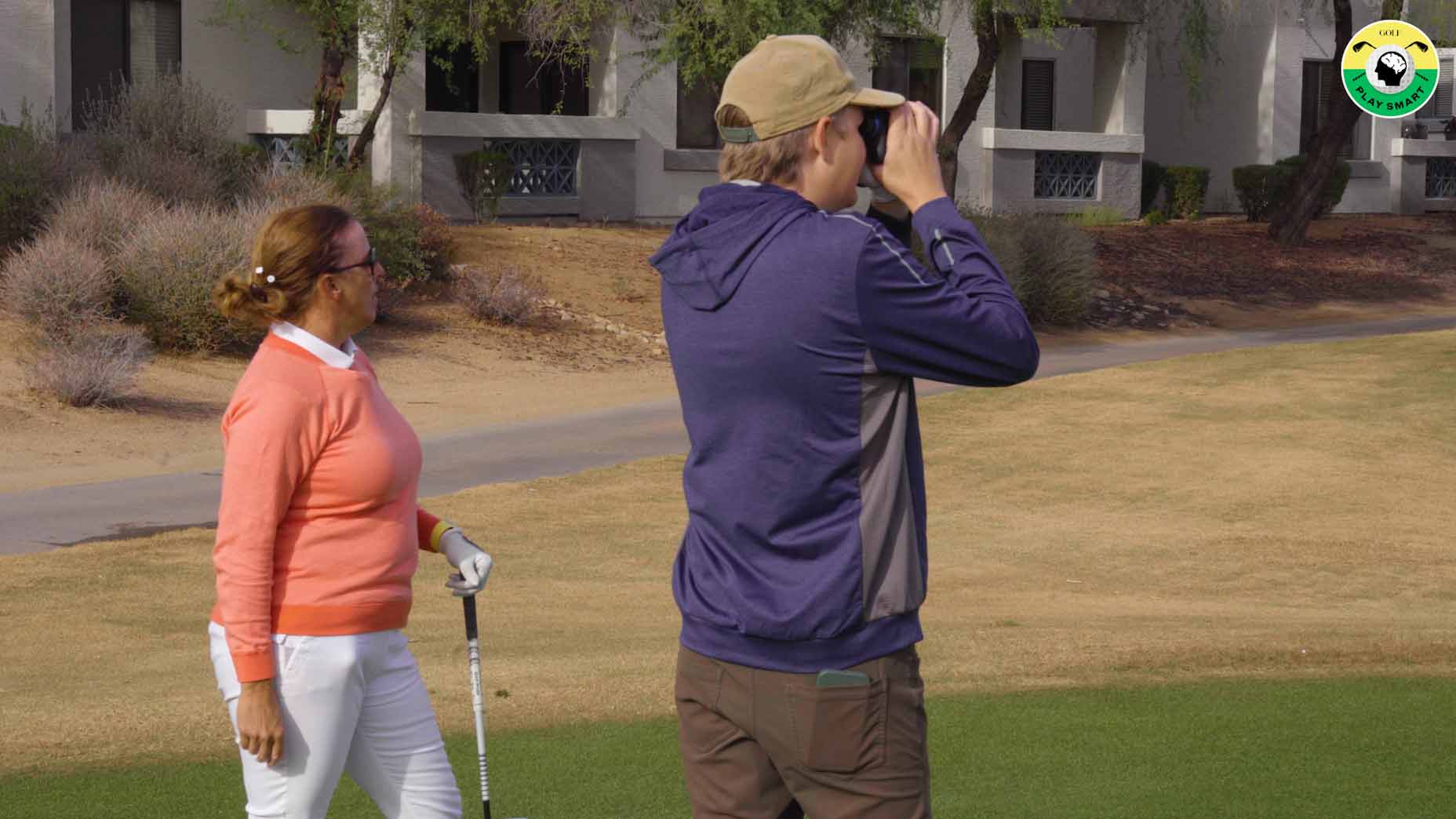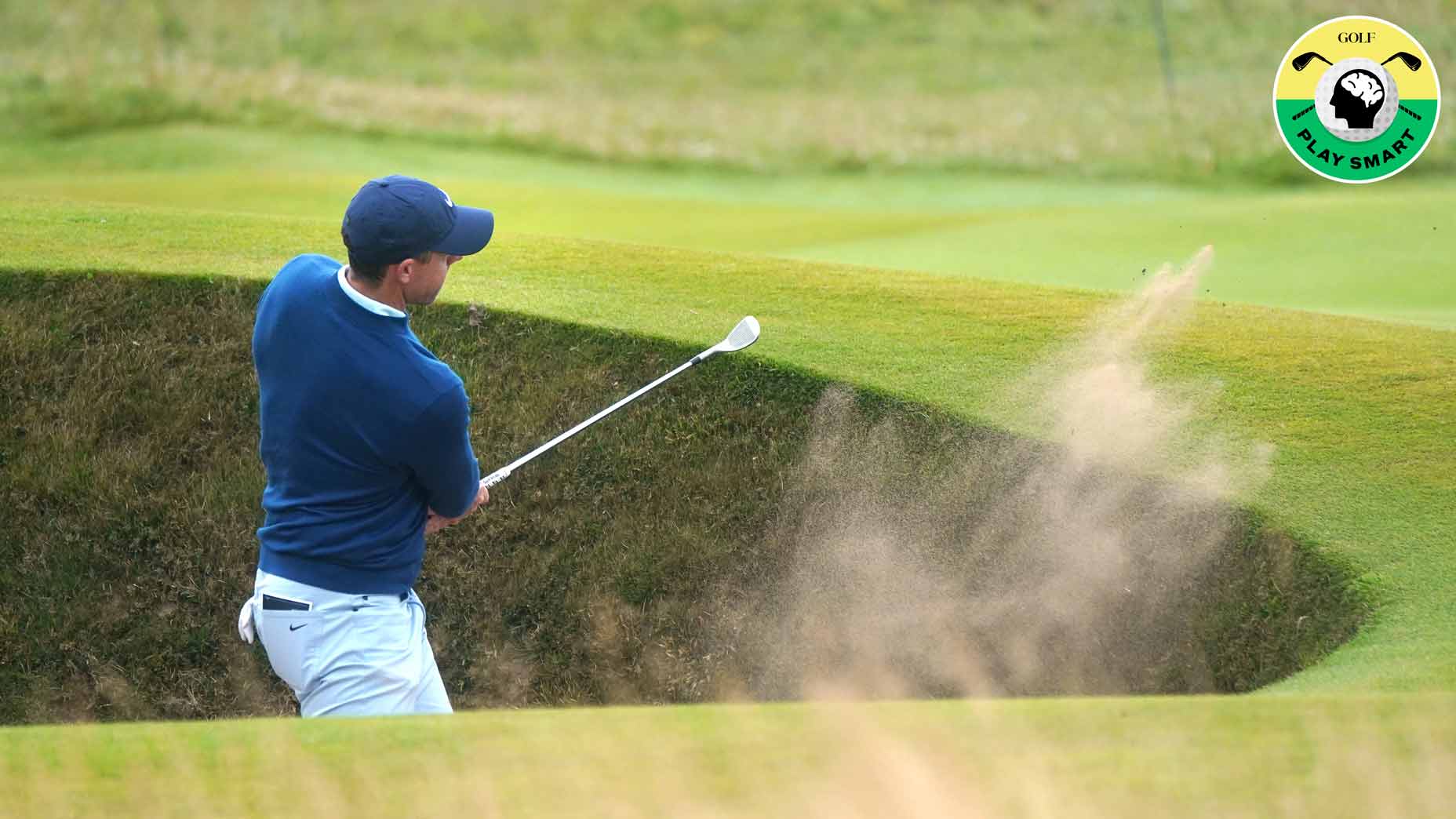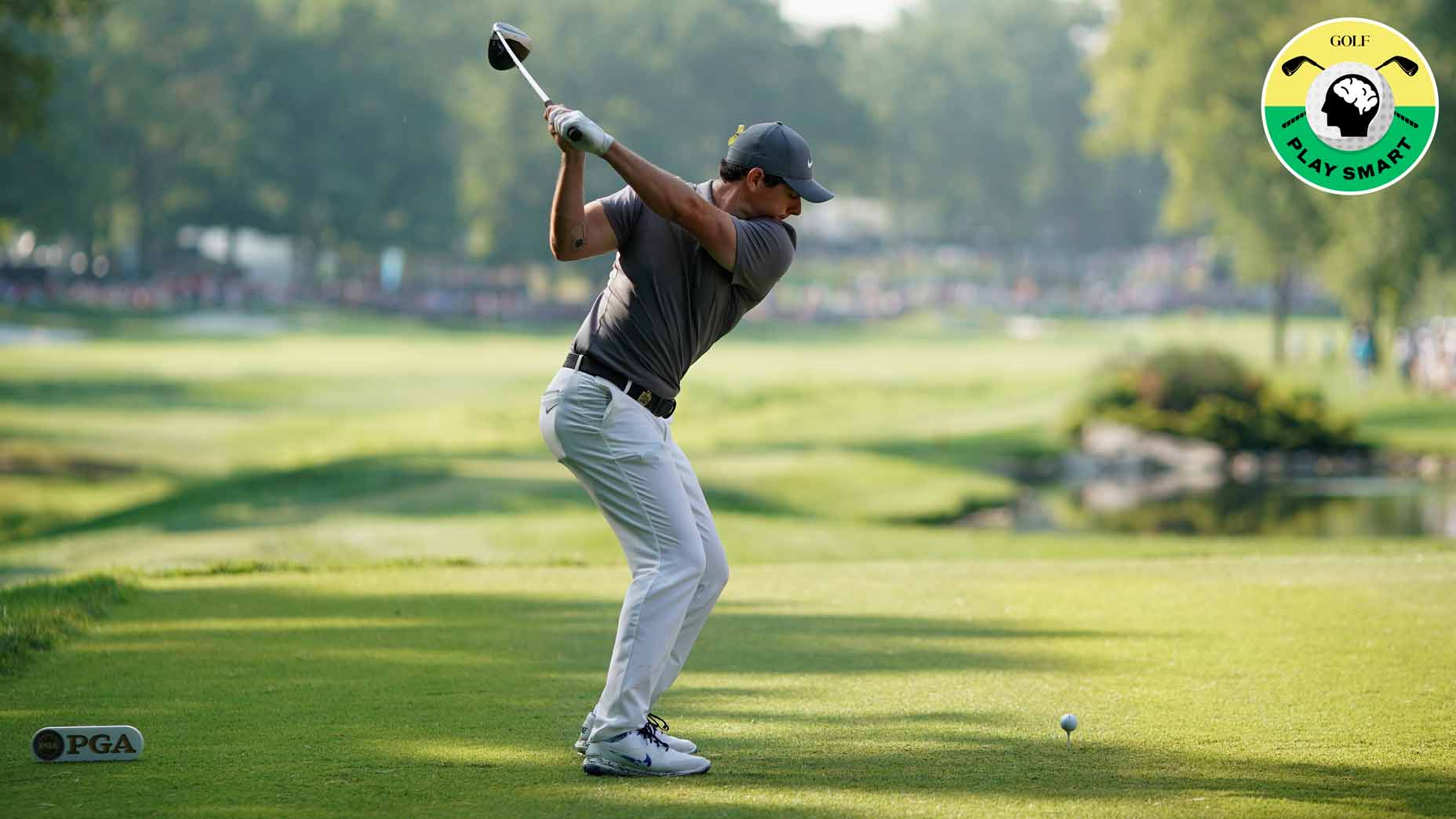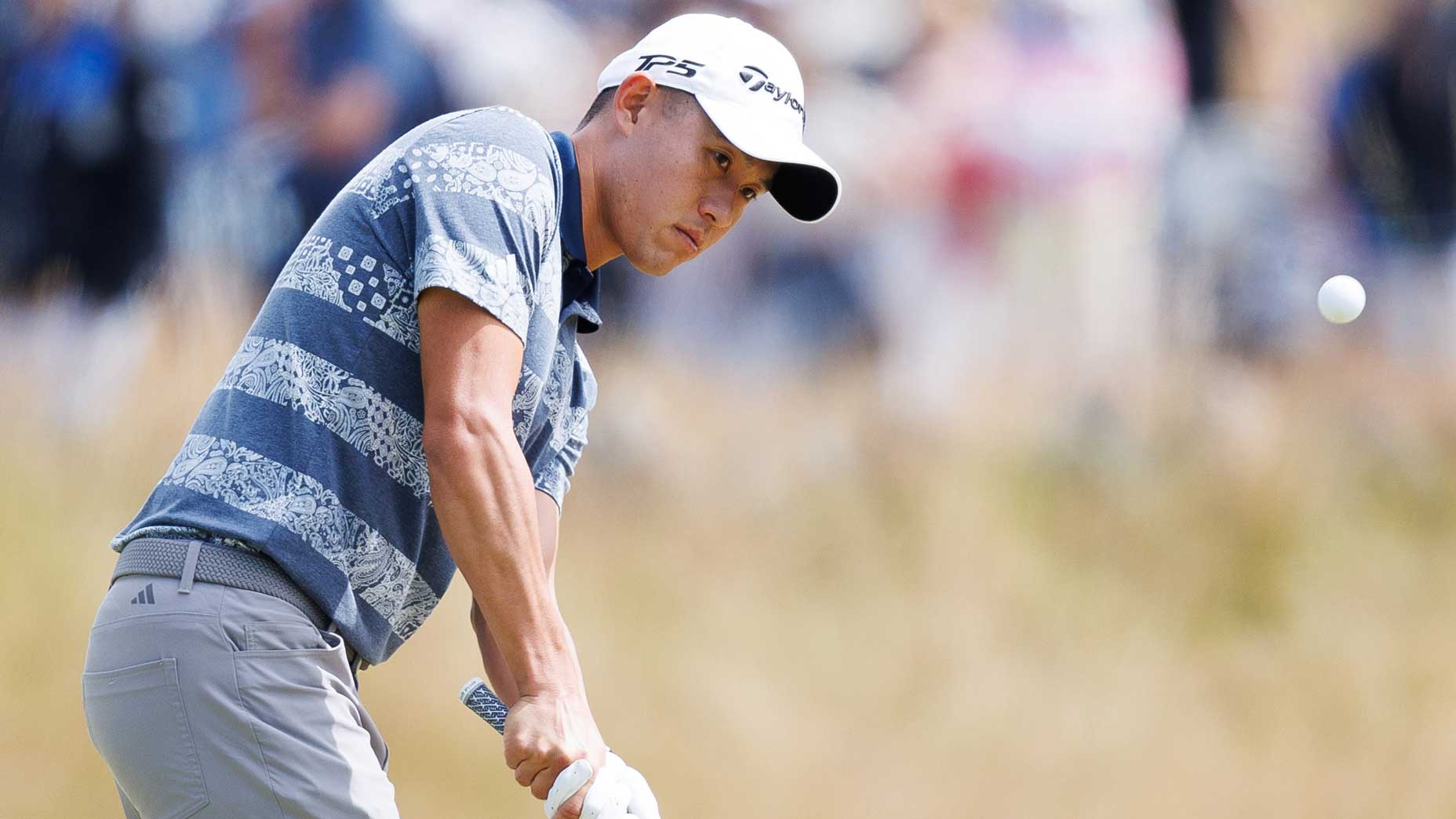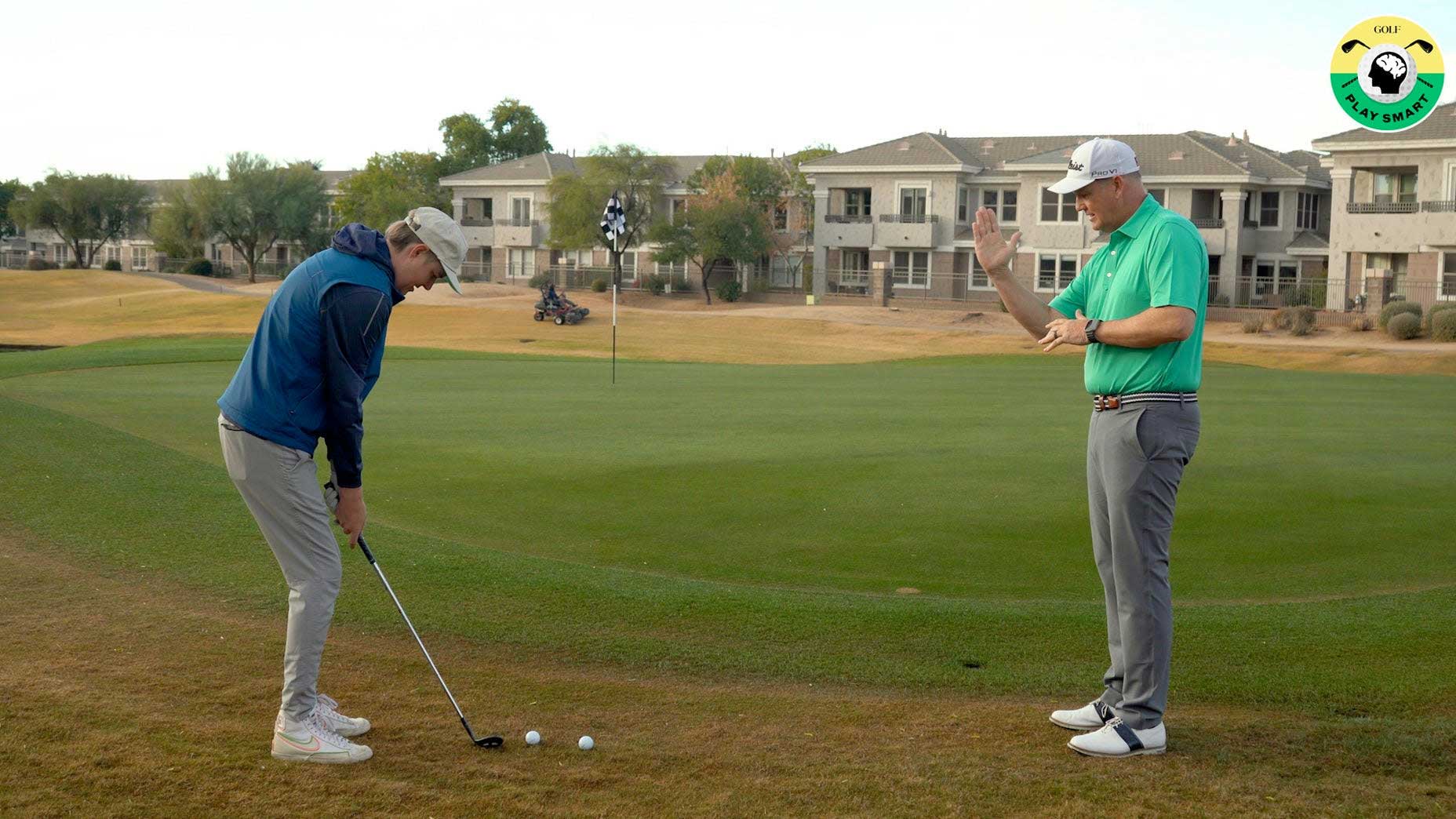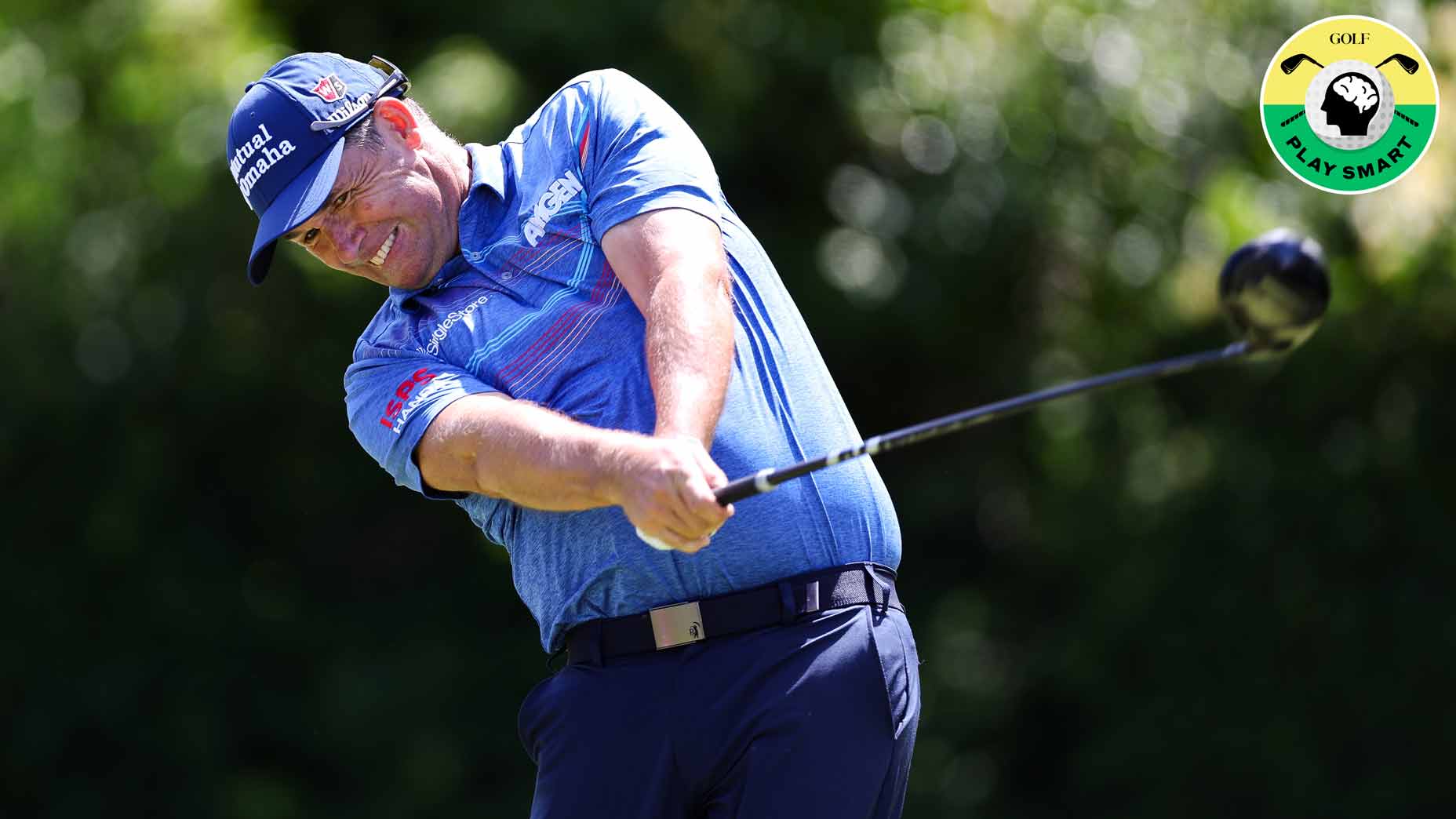What separates great golfers from good ones? Collin Morikawa explains
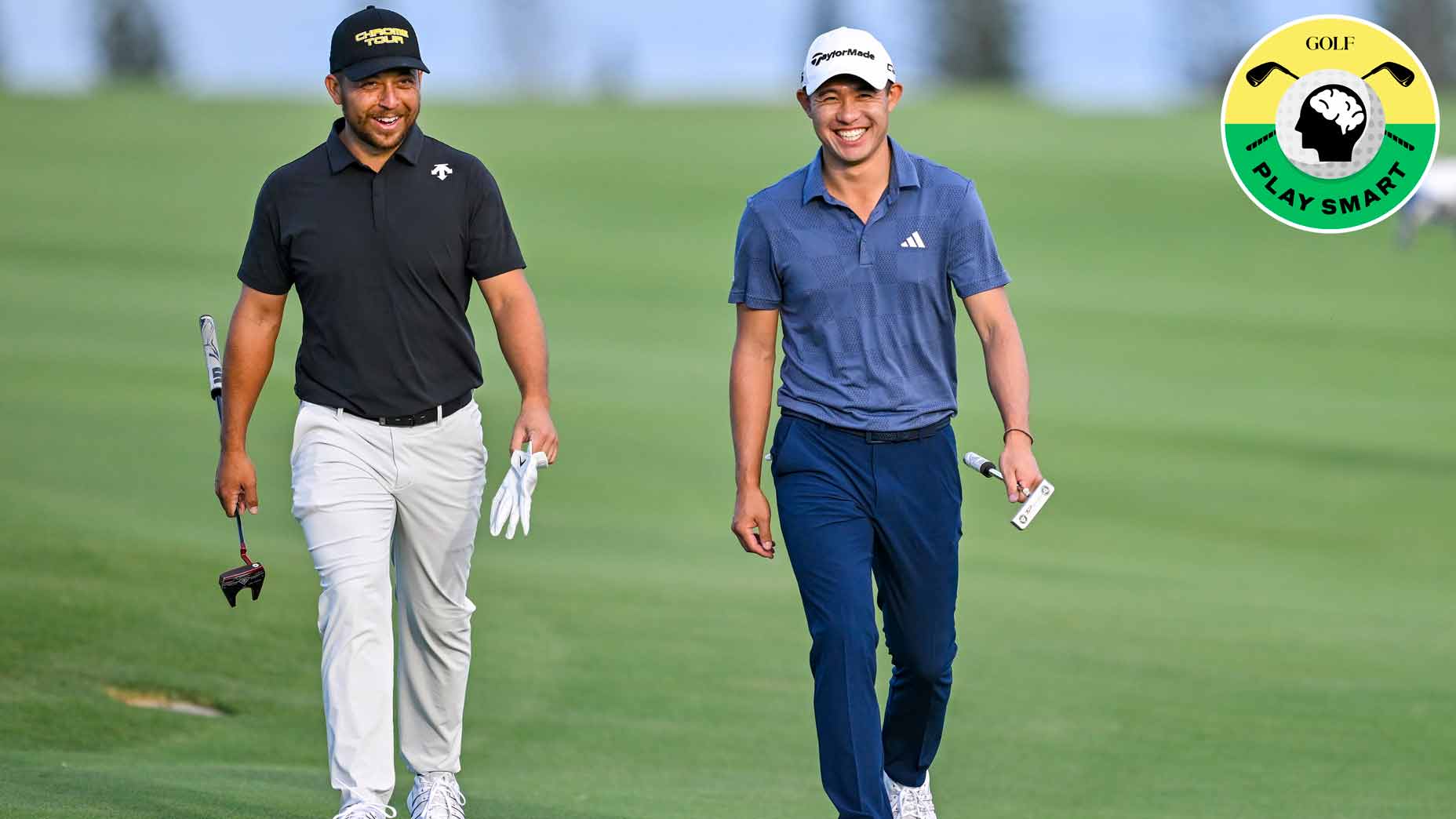
It's imperative to know where your misses are headed.
Getty Images
Welcome to Play Smart, a regular GOLF.com game-improvement column that will help you play smarter, better golf.
Golf is a game with razor-thin margins. An inch one way or the other can be the difference between a made putt and a miss, or a drive that splits the fairway and one that finds a hazard. There’s no sport that demands the precision and consistency that golf does.
With the margins so unforgiving, improvement can be difficult. Your game can be achingly close to a breakthrough but still feel light years away. Sometimes those last few inches are all that it takes.
There’s good news and bad news about this axiom. The good news? Improvement is not as far off as you may think. On the flip side, the precision required to achieve those gains is not easy to come by.
As you get to higher levels of golf, those margins are even slimmer. Everyone is good, but there are distinctions that separate them from the truly great.
The difference between good and great golfers
At the highest level of golf — the PGA Tour — these margins are inconceivably thin. Any player in the field can win any given week, and the difference between a huge paycheck and a missed cut can seldom be understood by recreational players.
Collin Morikawa, playing in this week’s season-opener in Hawaii, reflected on this fact after the first round of his 2024 campaign.
“If you know where you’re going to miss it, that’s the biggest thing,” he said. “Best players out here in the world that are winning and contending every week, they know where they’re going to miss it. They hit maybe a little bit more quality of golf shots, but slowly I’m learning where the ball’s going to go, that’s the biggest thing.”
Obviously, the margins are smaller on the pro circuit, but this thinking can be translated to the recreational ranks, too. As Morikawa said, the best players aren’t necessarily hitting more good shots that their counterparts. Instead, they are hitting fewer bad ones — and when they do, they have an idea of where their misses will be.
This is an important fact to note. Most amateur players get caught up in chasing the hero shots, firing at flags and taking on trouble. However, the best way to see improvement is simply by understanding your game, knowing where to miss and managing your mistakes.
If you’re struggling to find a breakthrough in your game, keep that in mind. Sometimes the easiest way to shoot lower scores is by getting out of your own way.


